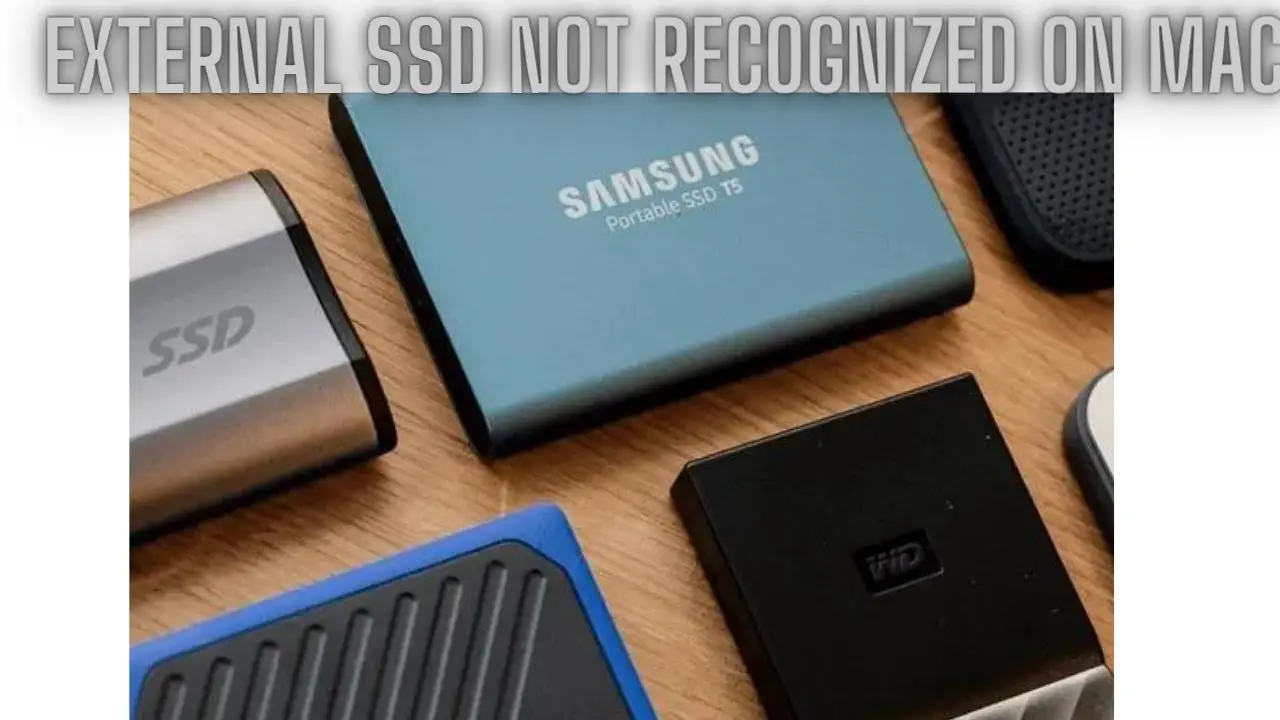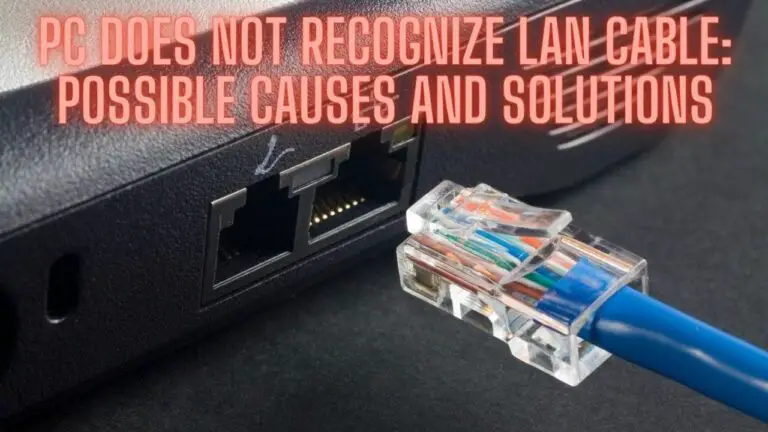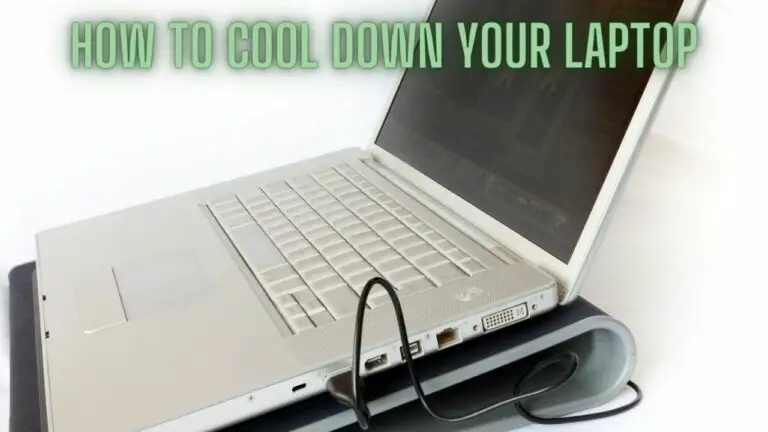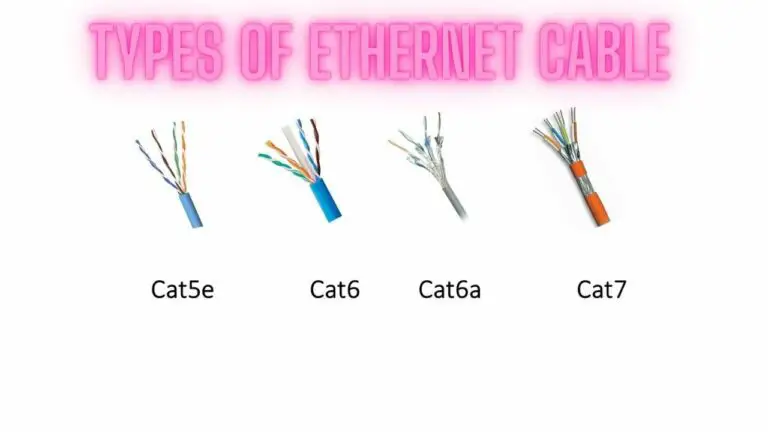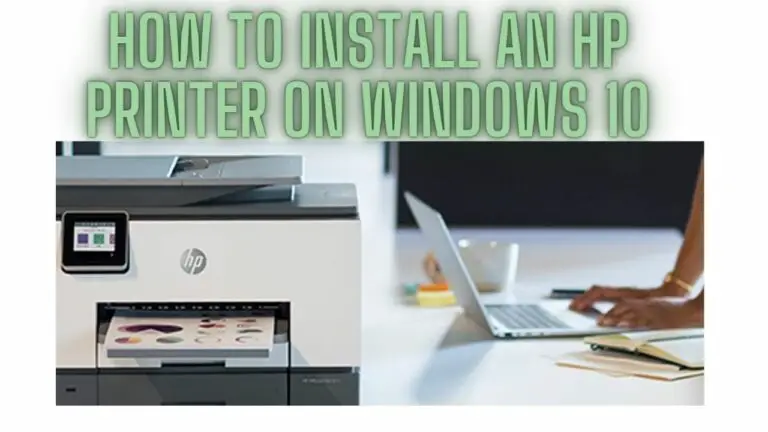External SSD Not Recognized on Mac? Troubleshooting and Solutions
Introduction
External Solid State Drives (SSDs) offer high-speed data storage and are commonly used to expand storage capacity or create backups on Mac computers. However, encountering issues where the external SSD is not recognized by the Mac can be frustrating and disruptive. This guide aims to provide troubleshooting steps to address this issue and restore the functionality of the external SSD on your Mac system. By following these steps systematically, you can identify and resolve the underlying causes preventing your Mac from recognizing the external SSD.
Possible Causes of External SSD Not Being Recognized
- Connection Issues: Loose or faulty connections between the external SSD and the Mac’s USB, Thunderbolt, or other ports can prevent proper recognition.
- Compatibility Issues: Incompatibility between the external SSD and the Mac’s operating system or hardware can lead to recognition problems.
- Power Supply: Insufficient power supply to the external SSD, especially if it’s bus-powered, can cause it not to be recognized.
- Outdated Software or Drivers: Outdated macOS or driver software on the Mac may not support the external SSD, leading to recognition issues.
- File System Corruption: File system errors or corruption on the external SSD can prevent it from being recognized by the Mac.
- Disk Formatting: The external SSD may not be formatted in a compatible file system supported by macOS, causing recognition issues.
- Disk Permissions: Incorrect disk permissions or access settings on the external SSD can prevent macOS from recognizing it.
- System Management Controller (SMC) or NVRAM/PRAM Issues: Resetting the SMC or NVRAM/PRAM on the Mac may resolve recognition issues related to hardware or configuration settings.
- Hardware Malfunction: Physical damage or malfunction of the external SSD hardware components can cause recognition problems.
- Software Conflicts: Conflicts with third-party software or system settings on the Mac may interfere with the recognition of the external SSD.
By considering these potential causes, you can troubleshoot and address the issue of your external SSD not being recognized by your Mac effectively. Identifying the specific cause will guide you in applying the appropriate troubleshooting steps to resolve the problem.
Troubleshooting Steps
- Check Compatibility and Connection:
- Ensure that the external SSD is compatible with your Mac’s operating system and hardware specifications.
- Verify that the connection between the external SSD and the Mac’s USB, Thunderbolt, or other ports is secure and free from damage.
- Use a different USB or Thunderbolt cable to rule out cable-related issues.
- Verify Power Supply:
- If the external SSD is bus-powered, connect it to a powered USB hub or use a separate power adapter to ensure sufficient power supply.
- Check if the external SSD has any LED indicators to confirm if it’s receiving power when connected to the Mac.
- Update Mac Software and Drivers:
- Ensure that your Mac’s operating system is up to date by installing any available macOS updates.
- Check for firmware updates or driver software updates specifically related to external storage devices on your Mac.
- Test on Another Mac or Device:
- Connect the external SSD to another Mac or compatible device to determine if the issue is specific to your Mac or the external SSD itself.
- If the external SSD is recognized on another device, the problem may be related to your Mac’s configuration or settings.
- Format External SSD:
- If the external SSD is not formatted in a compatible file system for macOS, you may need to format it using Disk Utility.
- Be aware that formatting will erase all data on the external SSD, so ensure you have backed up any important files before proceeding.
- Repair Disk Permissions:
- Use Disk Utility to repair disk permissions on the external SSD, as incorrect permissions can prevent macOS from recognizing the drive.
- Open Disk Utility, select the external SSD, and choose “First Aid” to repair disk permissions.
- Reset SMC and NVRAM/PRAM:
- Reset the System Management Controller (SMC) and Non-Volatile Random Access Memory (NVRAM) or Parameter RAM (PRAM) on your Mac.
- Instructions for resetting SMC and NVRAM/PRAM can vary depending on your Mac model, so refer to Apple’s official support documentation for guidance.
- Seek Professional Assistance:
- If none of the above steps resolve the issue and the external SSD is still not recognized on your Mac, consider contacting Apple Support or a professional technician for further assistance.
- There may be underlying hardware or software issues that require advanced diagnostics and repair.
By following these troubleshooting steps systematically, you can identify and address the root cause of the external SSD not being recognized on your Mac, restoring its functionality and ensuring reliable data storage and access.
Check Compatibility and Connection
- Compatibility:
- Verify that the external SSD is compatible with your Mac’s operating system version. Some older SSD models may not be fully compatible with the latest macOS versions.
- Check the external SSD’s specifications and ensure it supports the file system format used by macOS (e.g., APFS, HFS+, exFAT).
- If the external SSD requires specific drivers or software for macOS compatibility, ensure they are installed and up to date.
- Connection:
- Ensure the external SSD is securely connected to the appropriate port on your Mac (e.g., USB-A, USB-C, Thunderbolt).
- If using a USB hub or adapter, ensure it is functioning correctly and supports the necessary data transfer speeds for the external SSD.
- Try connecting the external SSD to a different USB or Thunderbolt port on your Mac to rule out port-related issues.
- Check the integrity of the USB or Thunderbolt cable connecting the external SSD to your Mac. Replace the cable if it appears damaged or faulty.
- If possible, test the external SSD with another Mac or computer to determine if the issue is specific to your Mac or the SSD itself.
By verifying compatibility and checking the connection between the external SSD and your Mac, you can identify any potential issues that may be preventing the SSD from being recognized and take appropriate troubleshooting steps to resolve them.
Verify Power Supply
To verify the power supply for your external SSD, follow these steps:
- Power Source:
- Ensure that the external SSD is receiving power from a reliable source. If it’s a bus-powered SSD, make sure it’s connected directly to your Mac or to a powered USB hub.
- Avoid using unpowered USB hubs or adapters, as they may not provide sufficient power to drive the external SSD.
- USB Port:
- Check the USB port on your Mac or the USB hub to ensure it’s functioning properly. Try connecting another device to the same port to confirm if it’s working correctly.
- If possible, connect the external SSD to a different USB port on your Mac to rule out any issues with the specific port.
- Power Indicator:
- Many external SSDs come with LED indicators to show when they are powered on. Check if the LED light on the external SSD illuminates when it’s connected to your Mac.
- If the LED light doesn’t turn on, it may indicate a power supply issue. Try connecting the external SSD to a different USB port or using a different USB cable to see if the LED light activates.
- Power Adapter (if applicable):
- If your external SSD comes with a separate power adapter, ensure that it’s securely connected to a power outlet and to the SSD itself.
- Check if the power adapter is functioning properly by testing it with another device or using a multimeter to measure the output voltage.
- USB Hub or Dock:
- If you’re using a USB hub or docking station to connect multiple devices to your Mac, ensure that it’s receiving power and functioning correctly.
- Some USB hubs or docks may not provide sufficient power to drive high-power devices like external SSDs. Consider using a powered USB hub or docking station if necessary.
By verifying the power supply for your external SSD, you can ensure that it’s receiving adequate power to function properly and be recognized by your Mac. If you continue to experience issues, consider trying a different power source or contacting the manufacturer for further assistance.
Update Mac Software and Drivers
To update your Mac’s software and drivers, including those related to external storage devices like SSDs, follow these steps:
- Check for macOS Updates:
- Click on the Apple menu in the top-left corner of your screen.
- Select “System Preferences” and then choose “Software Update.”
- Your Mac will check for any available updates. If updates are found, click on “Update Now” to download and install them.
- Follow the on-screen instructions to complete the update process. Your Mac may need to restart after installing updates.
- Install macOS Combo Update (Optional):
- If you encounter issues with software or drivers after updating macOS, you can try installing a macOS Combo Update.
- Go to the Apple Support website and search for “macOS Combo Update.”
- Download the latest Combo Update available for your macOS version.
- Double-click on the downloaded file to launch the installer and follow the on-screen instructions to complete the update process.
- Update Third-Party Drivers (if applicable):
- Some external SSDs may require specific drivers or software for compatibility with macOS.
- Check the manufacturer’s website for your external SSD model to see if updated drivers or software are available.
- Download and install any available updates according to the manufacturer’s instructions.
- Check Disk Utility:
- Open Disk Utility from the Applications > Utilities folder.
- Select your external SSD from the list of devices on the left sidebar.
- Click on the “First Aid” button and follow the prompts to repair any disk errors.
- After repairing disk permissions, check if the external SSD is now recognized by your Mac.
- Restart Your Mac:
- After updating macOS and any relevant drivers, restart your Mac to ensure that the changes take effect.
- Once your Mac has restarted, reconnect the external SSD and check if it’s now recognized.
Updating your Mac’s software and drivers can often resolve compatibility issues and improve performance with external SSDs. If the external SSD is still not recognized after updating, proceed to further troubleshooting steps or contact Apple Support for assistance.
Test on Another Mac or Device
Testing the external SSD on another Mac or device can help determine whether the issue is specific to your Mac or if there’s a problem with the SSD itself. Here’s how to proceed:
- Connect to Another Mac:
- Disconnect the external SSD from your current Mac.
- Connect the external SSD to another Mac using the appropriate cable and port.
- Wait a few moments to see if the external SSD is recognized by the other Mac.
- If the external SSD appears on the desktop or in Finder on the other Mac, it indicates that the SSD is functioning properly, and the issue may be with your original Mac.
- Connect to a Different Device:
- If you don’t have access to another Mac, you can try connecting the external SSD to a different compatible device, such as a Windows PC or another computer.
- Follow the same steps as above to connect the external SSD and check if it’s recognized by the other device.
- If the external SSD is detected on the other device, it suggests that the SSD is working correctly, and the problem may lie with your original Mac.
- Observe Behavior:
- Pay attention to how the external SSD behaves when connected to the other Mac or device. Does it appear as expected in Finder or File Explorer? Can you access its contents without issues?
- Note any error messages or unusual behavior that may provide clues about the underlying problem.
- Troubleshoot Mac (if necessary):
- If the external SSD works on another Mac or device but not on your original Mac, it indicates that the issue is likely with your Mac’s configuration or settings.
- Proceed with further troubleshooting steps on your Mac, such as checking compatibility, updating software and drivers, and verifying power supply and connections.
By testing the external SSD on another Mac or device, you can determine whether the problem lies with the SSD itself or with your original Mac. This information can help narrow down the possible causes and guide your troubleshooting efforts effectively.
Format External SSD
Formatting the external SSD can help resolve compatibility issues or file system errors that may be preventing it from being recognized by your Mac. However, formatting will erase all data on the external SSD, so be sure to back up any important files before proceeding. Here’s how to format the external SSD using Disk Utility:
- Open Disk Utility:
- Click on the “Finder” icon in the Dock to open a Finder window.
- Go to “Applications” > “Utilities” and double-click on “Disk Utility” to open it.
- Select External SSD:
- In the Disk Utility window, you’ll see a list of all connected drives and volumes on the left sidebar.
- Select the external SSD from the list. Be careful to choose the correct drive to avoid formatting the wrong disk.
- Erase External SSD:
- Once the external SSD is selected, click on the “Erase” button in the toolbar at the top of the Disk Utility window.
- A dialog box will appear, allowing you to specify the format and name for the external SSD.
- Choose Format and Name:
- In the dialog box, choose a name for the external SSD in the “Name” field.
- Next, select a compatible file system format for macOS. The recommended format is “APFS” (Apple File System) for macOS 10.13 and later. If you need compatibility with older macOS versions or other operating systems, you can choose “Mac OS Extended (Journaled)” or “ExFAT.”
- If desired, you can also choose a scheme option (GUID Partition Map for Intel-based Macs).
- Start Erasing:
- Double-check the selected options to ensure they are correct.
- Click on the “Erase” button to begin formatting the external SSD.
- Disk Utility will prompt you to confirm the action. Click “Erase” again to proceed.
- The formatting process may take some time depending on the size of the external SSD and the selected options.
- Complete the Process:
- Once the formatting is complete, Disk Utility will display a message indicating that the operation was successful.
- The external SSD should now be formatted and ready for use with your Mac. You can close Disk Utility and eject the external SSD if desired.
After formatting the external SSD, reconnect it to your Mac and check if it’s now recognized. If the issue persists, try reconnecting the SSD to another Mac or device to further isolate the problem. If necessary, proceed with additional troubleshooting steps or seek assistance from Apple Support.
Repair Disk Permissions
Repairing disk permissions can help resolve issues related to incorrect permissions on the external SSD, which may prevent it from being recognized by your Mac. Here’s how to repair disk permissions using Disk Utility:
- Open Disk Utility:
- Click on the “Finder” icon in the Dock to open a Finder window.
- Go to “Applications” > “Utilities” and double-click on “Disk Utility” to open it.
- Select External SSD:
- In the Disk Utility window, you’ll see a list of all connected drives and volumes on the left sidebar.
- Select the external SSD from the list. Be careful to choose the correct drive to avoid unintended changes.
- Run First Aid:
- With the external SSD selected, click on the “First Aid” button in the toolbar at the top of the Disk Utility window.
- A dialog box will appear, asking if you want to run First Aid on the selected disk. Click “Run” to proceed.
- Wait for Repair Process:
- Disk Utility will begin scanning the external SSD for errors and repairing any issues it finds.
- Depending on the size of the external SSD and the extent of the errors, the repair process may take some time to complete. Be patient and allow Disk Utility to finish.
- Review Results:
- Once the repair process is complete, Disk Utility will display a message indicating whether any errors were found and repaired.
- Review the results to ensure that the repair was successful. If any errors persist, Disk Utility may provide further information or suggest additional actions.
- Restart Your Mac:
- After repairing disk permissions, it’s a good idea to restart your Mac to ensure that any changes take effect.
- Once your Mac has restarted, reconnect the external SSD and check if it’s now recognized.
By repairing disk permissions on the external SSD, you can address any issues related to incorrect permissions that may be preventing it from being recognized by your Mac. If the problem persists, consider trying additional troubleshooting steps or seeking assistance from Apple Support.
Reset SMC and NVRAM/PRAM
Resetting the System Management Controller (SMC) and Non-Volatile Random Access Memory (NVRAM) or Parameter RAM (PRAM) can help resolve various issues, including those related to hardware and configuration settings that may affect the recognition of external devices like SSDs. Here’s how to reset the SMC and NVRAM/PRAM on your Mac:
- Reset SMC (System Management Controller):
- Shut down your Mac completely.
- If your Mac has a removable battery:
- Disconnect the power adapter.
- Remove the battery from the Mac.
- Press and hold the power button for at least 5 seconds.
- Reinsert the battery and reconnect the power adapter.
- If your Mac does not have a removable battery:
- Disconnect the power adapter.
- Press and hold the Shift + Control + Option keys on the left side of the built-in keyboard, then press the power button simultaneously. Hold all keys and the power button for 10 seconds.
- Release all keys and the power button, then reconnect the power adapter.
- Reset NVRAM/PRAM (Non-Volatile Random Access Memory / Parameter RAM):
- Shut down your Mac completely.
- Turn on your Mac, then immediately press and hold the Command + Option + P + R keys simultaneously.
- Keep holding the keys until you hear the startup sound for the second time or see the Apple logo and progress bar appear and disappear for the second time.
- Release the keys and allow your Mac to boot up normally.
- Test External SSD:
- Once you’ve reset the SMC and NVRAM/PRAM, reconnect the external SSD to your Mac and check if it’s now recognized.
- If the issue persists, try restarting your Mac again to see if the resets have resolved the problem.
Resetting the SMC and NVRAM/PRAM can often help resolve issues related to hardware and system configuration that may be preventing your Mac from recognizing external devices like SSDs. If the external SSD is still not recognized after resetting, consider trying additional troubleshooting steps or seeking assistance from Apple Support.
Seek Professional Assistance
If you have followed all the troubleshooting steps mentioned earlier and your external SSD is still not being recognized by your Mac, it may be time to seek professional assistance. Here are some options to consider:
- Apple Support:
- Contact Apple Support either online or by visiting an Apple Store or authorized service provider.
- Apple Support representatives can provide further guidance and assistance with diagnosing and resolving the issue with your Mac and external SSD.
- Authorized Service Provider:
- Locate an authorized Apple service provider in your area and schedule an appointment to have your Mac and external SSD inspected.
- Authorized service providers have certified technicians who are trained to diagnose and repair issues with Apple products.
- Data Recovery Services:
- If the external SSD contains important data that you need to recover, consider seeking assistance from a professional data recovery service.
- Data recovery specialists have the expertise and tools to retrieve data from damaged or inaccessible storage devices, including external SSDs.
- Computer Repair Shops:
- You may also consider contacting a reputable computer repair shop or technician who specializes in Mac repairs.
- They can assess the situation and provide recommendations for resolving the issue with your Mac and external SSD.
- Manufacturer Support:
- Reach out to the manufacturer of the external SSD for technical support and assistance.
- They may offer troubleshooting guidance or warranty support if the SSD is still under warranty.
By seeking professional assistance, you can ensure that experienced technicians evaluate the issue with your Mac and external SSD thoroughly and provide appropriate solutions to resolve the problem.
FAQS
Why is my external SSD not showing up on my Mac?
- There could be several reasons for this issue, including connection problems, incompatible file systems, drive letter conflicts (if previously used on Windows), or hardware issues.
What should I do if my Mac doesn’t recognize my external SSD?
- Start by checking the physical connections, trying different ports and cables, and ensuring that the SSD is properly powered. You can also check if it appears in Disk Utility and verify its compatibility with macOS.
How can I format my external SSD to a macOS-supported file system if it’s not recognized?
- You can format the SSD to a macOS-supported file system like APFS or HFS+ using Disk Utility. Be cautious as this process erases all data on the drive.
Can I use a third-party utility to recover data from an unrecognized SSD?
- Yes, there are third-party data recovery utilities available that can help recover data from an unrecognized SSD. However, it’s best to consult with a professional data recovery service for critical data loss situations.
My external SSD was working fine before; why did it suddenly stop being recognized?
- Sudden recognition issues can be caused by various factors, including software updates, cable or port problems, or changes in power supply. Investigate these aspects to pinpoint the cause.
How can I prevent my external SSD from going to sleep mode and causing recognition issues?
- You can disable the “Put hard disks to sleep when possible” option in “System Preferences” > “Energy Saver” to prevent your Mac from putting the SSD to sleep, which might lead to recognition problems.
What if my external SSD is recognized on another Mac or PC but not on mine?
- This suggests that the issue might be specific to your Mac. Try restarting your Mac, checking for macOS updates, or testing the SSD on different ports to isolate the problem.
Is there any way to recover data from an unrecognized SSD without formatting it?
- Data recovery from an unrecognized SSD without formatting is possible but can be complex. Consult with a professional data recovery service for assistance to avoid data loss.
Could a firmware update solve the recognition issue with my external SSD?
- Yes, firmware updates can sometimes address compatibility issues. Check the SSD manufacturer’s website for firmware updates and follow their instructions to apply any available updates.
Conclusion
In conclusion, when your external SSD is not recognized on your Mac, it can be a frustrating experience. By following the troubleshooting steps mentioned above, you can identify and resolve common issues that may be preventing your Mac from detecting the SSD. Remember to back up your data before attempting any drastic solutions like reformatting to avoid data loss.

